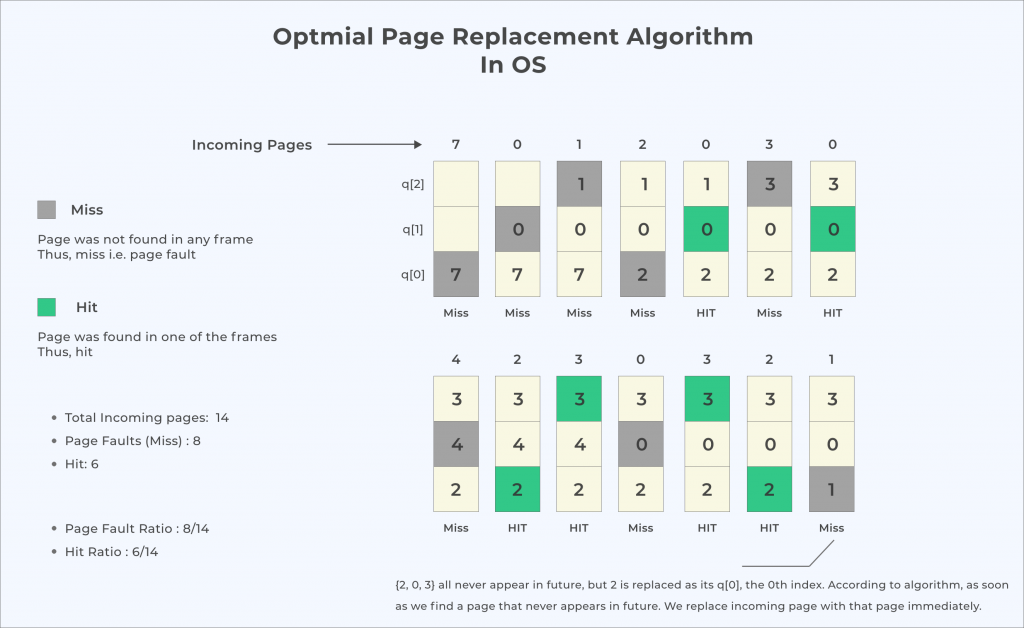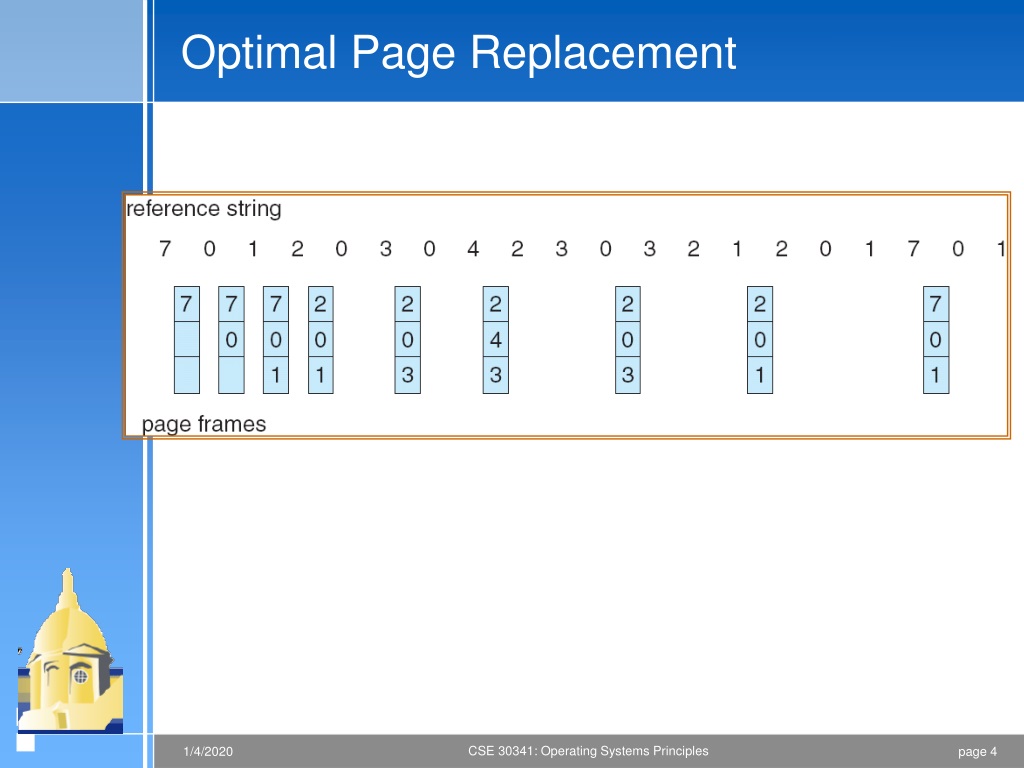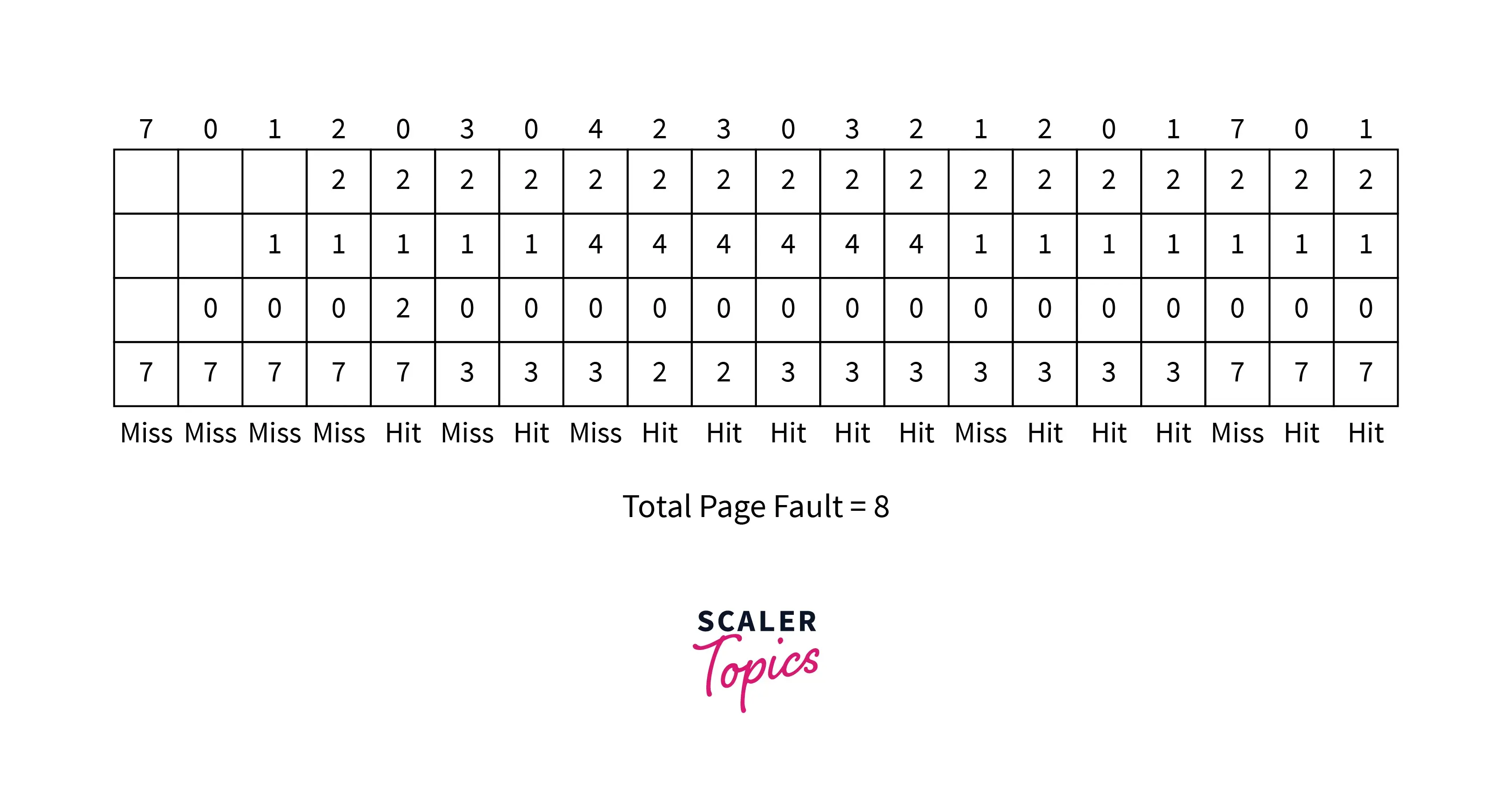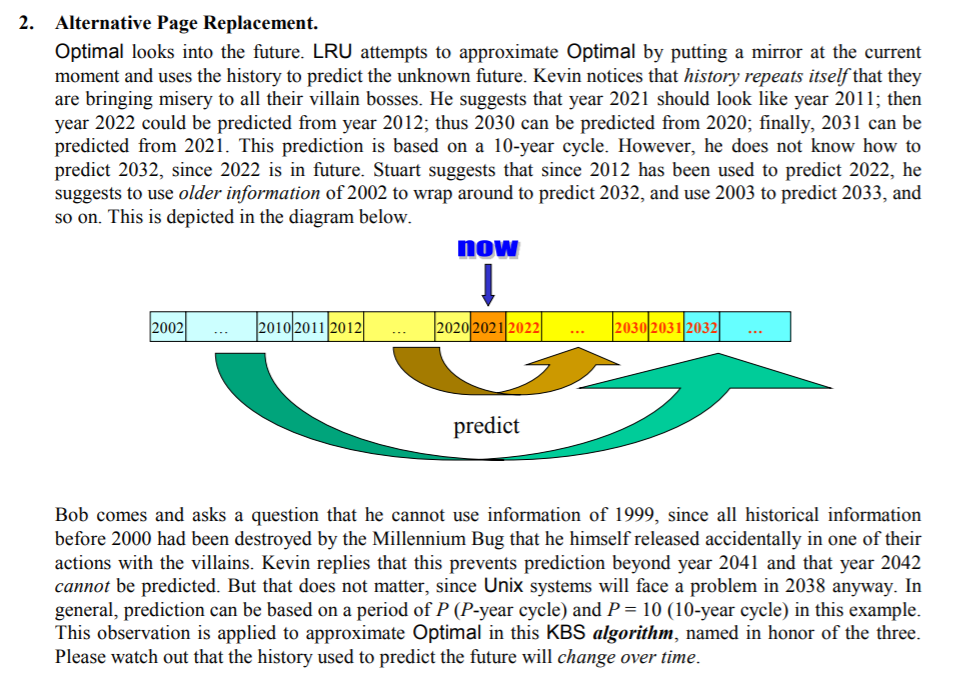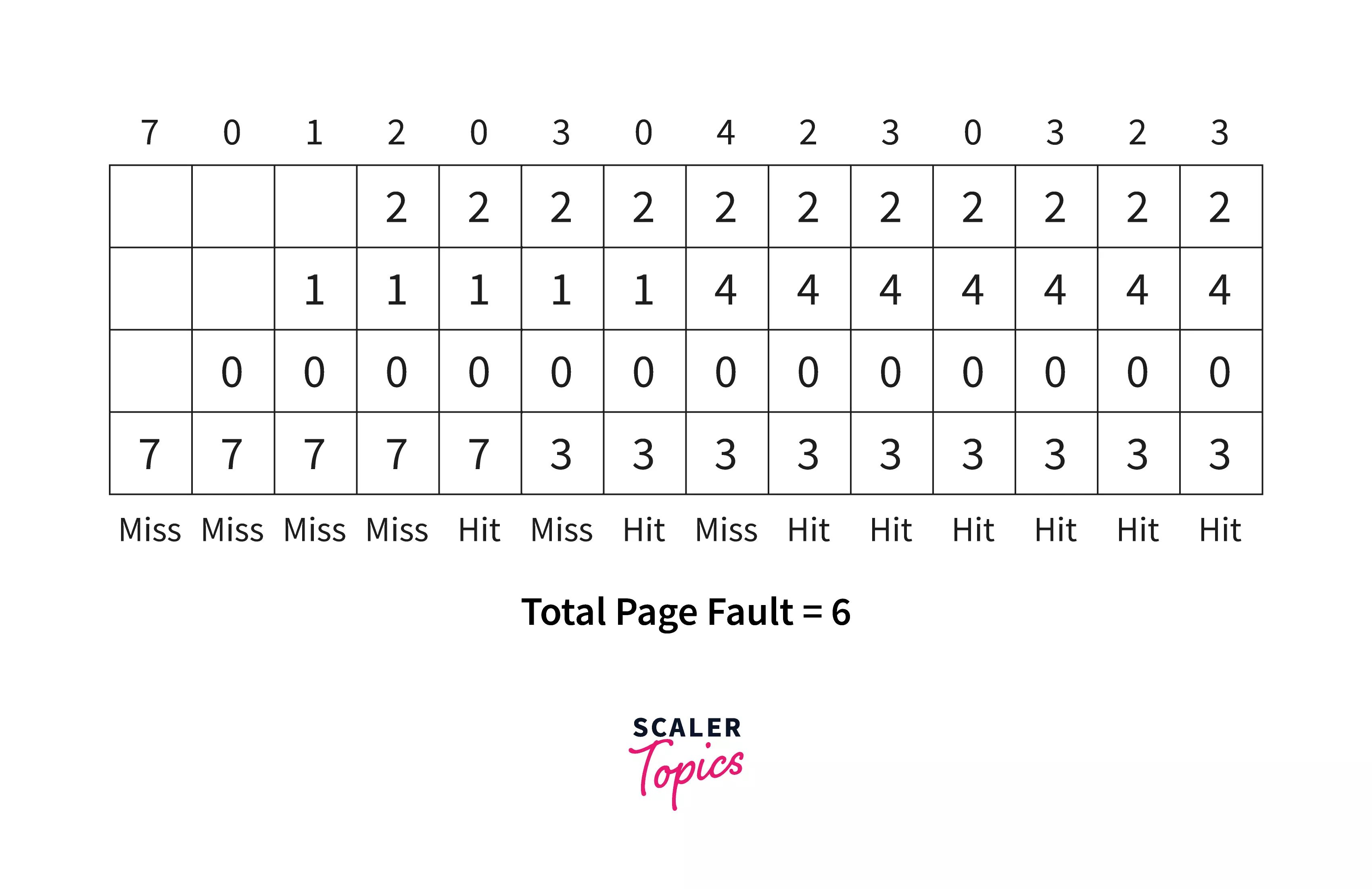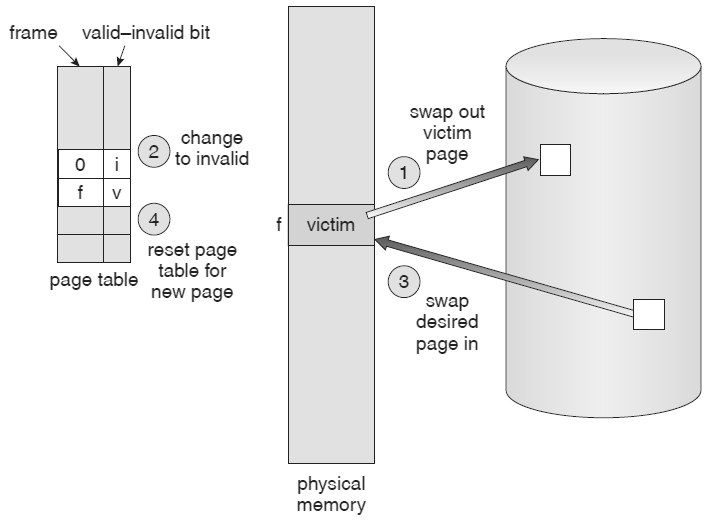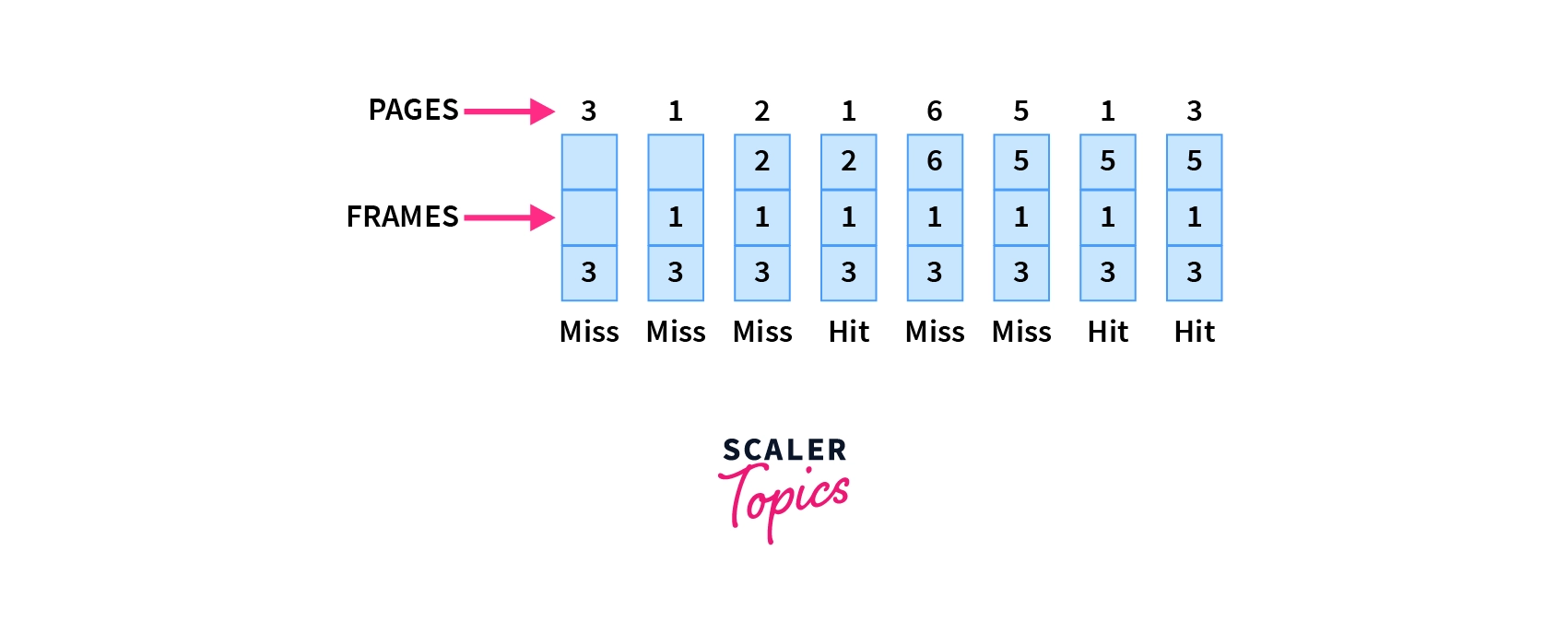Page Replacement Optimal
Page Replacement Optimal - Web the theoretically optimal page replacement algorithm (also known as opt, clairvoyant replacement algorithm, or bélády's optimal page replacement policy) is an algorithm that works as follows: When a page fault occurs, the algorithm examines the future references of each page currently residing. Web the optimal page replacement (opt) algorithm is a memory management technique. It minimizes the number of page faults by predicting future accesses and replacing the least recently used pages. Web the optimal page replacement algorithm operates by making decisions based on the future page references. Consider the page references 7, 0, 1, 2, 0, 3, 0, 4, 2, 3, 0,. Web overall, the optimal page replacement algorithm is a useful algorithm for managing page frames in memory, and its time complexity is reasonable in practice. Web optimal page replacement: In this algorithm, pages are replaced which would not be used for the longest duration of time in the future. When a page needs to be.
Web the optimal page replacement algorithm operates by making decisions based on the future page references. Web overall, the optimal page replacement algorithm is a useful algorithm for managing page frames in memory, and its time complexity is reasonable in practice. Web the theoretically optimal page replacement algorithm (also known as opt, clairvoyant replacement algorithm, or bélády's optimal page replacement policy) is an algorithm that works as follows: When a page fault occurs, the algorithm examines the future references of each page currently residing. Feeling lost in the world of random dsa. Consider the page references 7, 0, 1, 2, 0, 3, 0, 4, 2, 3, 0,. It minimizes the number of page faults by predicting future accesses and replacing the least recently used pages. When a page needs to be. Web optimal page replacement: Web the optimal page replacement (opt) algorithm is a memory management technique.
In this algorithm, pages are replaced which would not be used for the longest duration of time in the future. Web the theoretically optimal page replacement algorithm (also known as opt, clairvoyant replacement algorithm, or bélády's optimal page replacement policy) is an algorithm that works as follows: Web the optimal page replacement algorithm operates by making decisions based on the future page references. When a page fault occurs, the algorithm examines the future references of each page currently residing. Web optimal page replacement: Consider the page references 7, 0, 1, 2, 0, 3, 0, 4, 2, 3, 0,. It minimizes the number of page faults by predicting future accesses and replacing the least recently used pages. Web the optimal page replacement (opt) algorithm is a memory management technique. Web overall, the optimal page replacement algorithm is a useful algorithm for managing page frames in memory, and its time complexity is reasonable in practice. Feeling lost in the world of random dsa.
Page Replacement Algorithms in OS
When a page fault occurs, the algorithm examines the future references of each page currently residing. It minimizes the number of page faults by predicting future accesses and replacing the least recently used pages. Web the optimal page replacement (opt) algorithm is a memory management technique. Feeling lost in the world of random dsa. Web optimal page replacement:
PPT Page Replacement Algorithms PowerPoint Presentation, free
When a page needs to be. It minimizes the number of page faults by predicting future accesses and replacing the least recently used pages. In this algorithm, pages are replaced which would not be used for the longest duration of time in the future. Web optimal page replacement: Web the theoretically optimal page replacement algorithm (also known as opt, clairvoyant.
Optimal Page Replacement Algorithm Scaler Topics
When a page needs to be. It minimizes the number of page faults by predicting future accesses and replacing the least recently used pages. Web overall, the optimal page replacement algorithm is a useful algorithm for managing page frames in memory, and its time complexity is reasonable in practice. Consider the page references 7, 0, 1, 2, 0, 3, 0,.
2. Alternative Page Replacement. Optimal Looks Int...
Web the optimal page replacement (opt) algorithm is a memory management technique. Web the optimal page replacement algorithm operates by making decisions based on the future page references. When a page needs to be. Feeling lost in the world of random dsa. Web the theoretically optimal page replacement algorithm (also known as opt, clairvoyant replacement algorithm, or bélády's optimal page.
Chirag's Blog Optimal Page Replacement Algorithm What is page
Web the theoretically optimal page replacement algorithm (also known as opt, clairvoyant replacement algorithm, or bélády's optimal page replacement policy) is an algorithm that works as follows: It minimizes the number of page faults by predicting future accesses and replacing the least recently used pages. In this algorithm, pages are replaced which would not be used for the longest duration.
Optimal Page Replacement Algorithm Scaler Topics
Web overall, the optimal page replacement algorithm is a useful algorithm for managing page frames in memory, and its time complexity is reasonable in practice. Web the optimal page replacement algorithm operates by making decisions based on the future page references. Web the optimal page replacement (opt) algorithm is a memory management technique. When a page fault occurs, the algorithm.
Page replacement Algorithms OPTIMAL Example OS Lec28 Bhanu
Consider the page references 7, 0, 1, 2, 0, 3, 0, 4, 2, 3, 0,. Web the optimal page replacement algorithm operates by making decisions based on the future page references. Web overall, the optimal page replacement algorithm is a useful algorithm for managing page frames in memory, and its time complexity is reasonable in practice. Web the theoretically optimal.
Page Replacement Algorithm in Operating System Engineer's Portal
Consider the page references 7, 0, 1, 2, 0, 3, 0, 4, 2, 3, 0,. When a page fault occurs, the algorithm examines the future references of each page currently residing. It minimizes the number of page faults by predicting future accesses and replacing the least recently used pages. When a page needs to be. In this algorithm, pages are.
What is Page Replacement in OS? Scaler Topics
Web the optimal page replacement algorithm operates by making decisions based on the future page references. When a page fault occurs, the algorithm examines the future references of each page currently residing. Web overall, the optimal page replacement algorithm is a useful algorithm for managing page frames in memory, and its time complexity is reasonable in practice. Web optimal page.
OPT (Optimal) Page Replacement Algorithm YouTube
Web the theoretically optimal page replacement algorithm (also known as opt, clairvoyant replacement algorithm, or bélády's optimal page replacement policy) is an algorithm that works as follows: Web the optimal page replacement (opt) algorithm is a memory management technique. Web optimal page replacement: Web overall, the optimal page replacement algorithm is a useful algorithm for managing page frames in memory,.
Web The Optimal Page Replacement (Opt) Algorithm Is A Memory Management Technique.
In this algorithm, pages are replaced which would not be used for the longest duration of time in the future. Feeling lost in the world of random dsa. Web the theoretically optimal page replacement algorithm (also known as opt, clairvoyant replacement algorithm, or bélády's optimal page replacement policy) is an algorithm that works as follows: Consider the page references 7, 0, 1, 2, 0, 3, 0, 4, 2, 3, 0,.
When A Page Fault Occurs, The Algorithm Examines The Future References Of Each Page Currently Residing.
Web the optimal page replacement algorithm operates by making decisions based on the future page references. Web optimal page replacement: Web overall, the optimal page replacement algorithm is a useful algorithm for managing page frames in memory, and its time complexity is reasonable in practice. It minimizes the number of page faults by predicting future accesses and replacing the least recently used pages.
